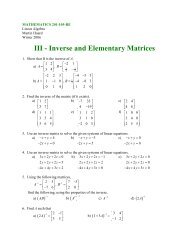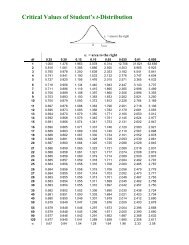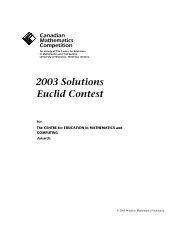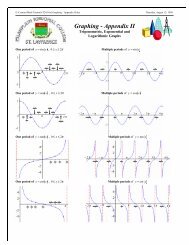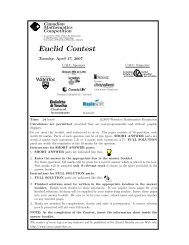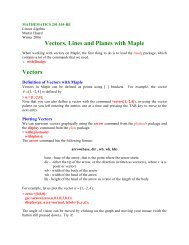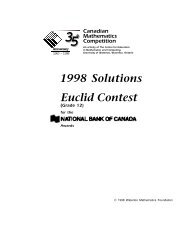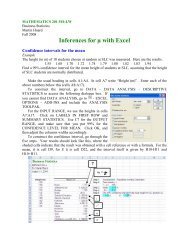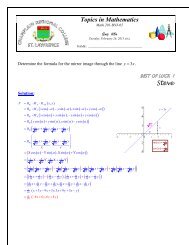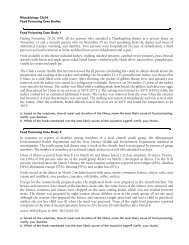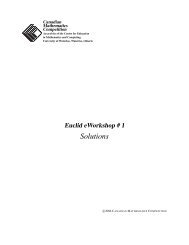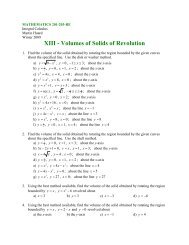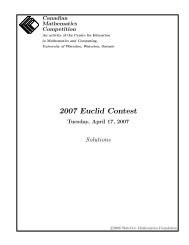Euclid Contest 2008 - CEMC - University of Waterloo
Euclid Contest 2008 - CEMC - University of Waterloo
Euclid Contest 2008 - CEMC - University of Waterloo
You also want an ePaper? Increase the reach of your titles
YUMPU automatically turns print PDFs into web optimized ePapers that Google loves.
(b) Determine all values <strong>of</strong> k, with k ≠ 0, for which the parabola<br />
has its vertex on the x-axis.<br />
y = kx 2 + (5k + 3)x + (6k + 5)<br />
6. (a) The function f(x) satisfies the equation f(x) = f(x − 1) + f(x + 1) for all values<br />
<strong>of</strong> x. If f(1) = 1 and f(2) = 3, what is the value <strong>of</strong> f(<strong>2008</strong>)?<br />
(b) The numbers a, b, c, in that order, form a three term arithmetic sequence (see<br />
below) and a + b + c = 60.<br />
The numbers a − 2, b, c + 3, in that order, form a three term geometric sequence.<br />
Determine all possible values <strong>of</strong> a, b and c.<br />
(An arithmetic sequence is a sequence in which each term after the first is<br />
obtained from the previous term by adding a constant. For example, 3, 5, 7 is<br />
an arithmetic sequence with three terms.<br />
A geometric sequence is a sequence in which each term after the first is obtained<br />
from the previous term by multiplying it by a constant. For example, 3, 6, 12 is<br />
a geometric sequence with three terms.)<br />
7. (a) The average <strong>of</strong> three consecutive multiples <strong>of</strong> 3 is a.<br />
The average <strong>of</strong> four consecutive multiples <strong>of</strong> 4 is a + 27.<br />
The average <strong>of</strong> the smallest and largest <strong>of</strong> these seven integers is 42.<br />
Determine the value <strong>of</strong> a.<br />
(b) Billy and Crystal each have a bag <strong>of</strong> 9 balls. The balls in each bag are numbered<br />
from 1 to 9. Billy and Crystal each remove one ball from their own bag. Let b be<br />
the sum <strong>of</strong> the numbers on the balls remaining in Billy’s bag. Let c be the sum <strong>of</strong><br />
the numbers on the balls remaining in Crystal’s bag. Determine the probability<br />
that b and c differ by a multiple <strong>of</strong> 4.<br />
8. (a) Points A, B, C, and D are arranged, as<br />
shown, with AB parallel to DC and P the<br />
point <strong>of</strong> intersection <strong>of</strong> AC and BD. Also,<br />
∠ACB = 90 ◦ , AC = CB, AB = BD = 2.<br />
Determine the measure <strong>of</strong> ∠DBC.<br />
A<br />
D<br />
P<br />
C<br />
2<br />
B<br />
(b) In the diagram, ABC is a right-angled<br />
triangle with P and R on AB. Also, Q is on<br />
AC, and P Q is parallel to BC. If RP = 2,<br />
BR = 3, BC = 4, and the area <strong>of</strong> △QRC<br />
is 5, determine the length <strong>of</strong> AP .<br />
C<br />
4<br />
Q<br />
B<br />
3 R 2<br />
P<br />
A



